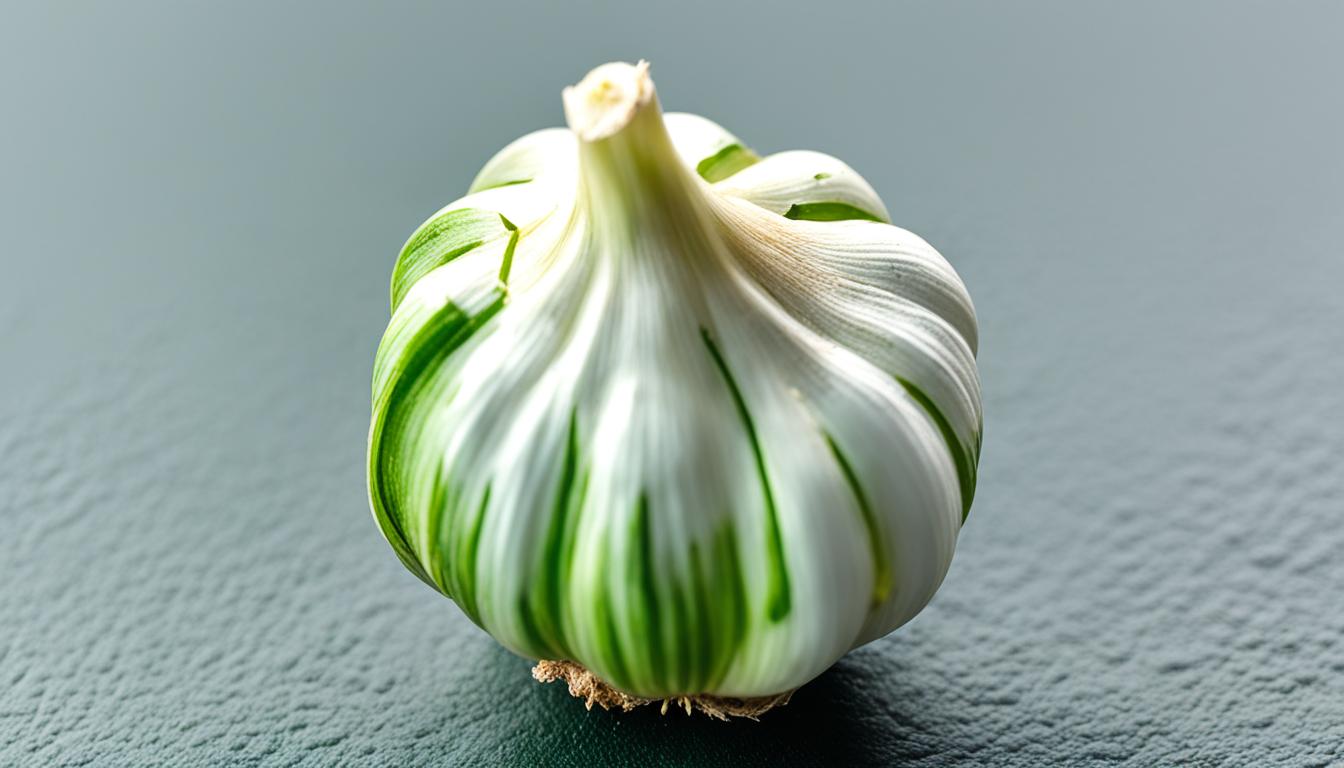Garlic is a versatile and beloved ingredient in countless dishes, adding depth and flavor to recipes from around the world. But have you ever wondered why your garlic sometimes turns green? It’s a phenomenon that has puzzled home cooks and professional chefs alike, leaving us questioning the science behind it. So, why does it happen? Let’s dig deeper and find out!
When you cut or grate garlic, chemical reactions occur that can cause it to turn green. These reactions involve the release of chemical precursors and the formation of green compounds similar to chlorophyll. But what exactly triggers these reactions? And is there a way to prevent it from happening?
To get to the root of the issue, we turned to Ask The Food Lab, where culinary experts have explored the mysteries of green garlic. They’ve uncovered the secrets behind why garlic turns green, how the age of the garlic plays a role, and the impact of these green compounds on its flavor.
Join us as we delve into the fascinating world of garlic chemistry and discover the science behind this intriguing phenomenon. Get ready to become a garlic aficionado and amaze your dinner guests with your newfound knowledge!
The Science Behind Garlic Turning Green
Have you ever wondered why garlic sometimes turns green when you prepare it? The phenomenon of garlic discoloration has a scientific explanation behind it. Let’s dive into the fascinating world of garlic chemistry and uncover the causes of this green garlic phenomenon.
Understanding the Chemical Reactions
Garlic turns green due to the presence of chemical precursors and the reactions that occur when these compounds are exposed to each other. When you cut or grate garlic, these chemical precursors are released, and they react with the common amino acids present in garlic to form green compounds similar to chlorophyll.
Aging and Garlic Discoloration
The age of the garlic plays a significant role in its propensity to turn green. Older garlic tends to contain larger quantities of the chemical precursors responsible for the green coloration. So, if you notice green garlic, it’s likely because the garlic has been stored for a longer period.
Safe to Eat with Stronger Flavor
While the green coloration may seem unusual, rest assured that it is safe to consume. In fact, the green compounds contribute to a stronger flavor in garlic. So, if you’re looking for a bold and intense garlic flavor, green garlic might be just what you need.
Preventing Garlic from Turning Green
If you prefer to keep your garlic white and avoid the green coloration, there are a few precautions you can take. Firstly, work quickly when preparing garlic to minimize the exposure of the chemical precursors to amino acids. Keeping the garlic cold can also help slow down the chemical reactions. Additionally, cooking garlic at higher temperatures can reduce the chances of it turning green. Another tip is to cook garlic separately from onions and avoid adding acid to garlic at the beginning of cooking.
In conclusion, the green garlic phenomenon is a result of fascinating chemical reactions that occur when garlic is cut or grated. While the green color may be unexpected, it adds a unique flavor dimension to dishes. Whether you embrace the green garlic or prefer it to stay white, understanding the science behind garlic discoloration can empower you in the kitchen.
The Impact of Garlic Germ on Flavor
The presence of the garlic germ, or the future garlic plant, can have a significant influence on the flavor of garlic. When it comes to garlic flavor, many people prefer the vibrancy and freshness of young garlic, particularly varieties obtained from farmers markets. Interestingly, the presence or absence of the germ in young garlic does not noticeably affect its flavor.
However, as garlic ages and is stored for longer periods, the presence of the germ in older garlic can lead to an overpoweringly strong and harsh flavor. This pungent flavor profile may not be well-received by everyone. To mitigate this flavor and create a more enjoyable culinary experience, removing the germ from older garlic is recommended.
In taste tests, dishes made with younger garlic, both with and without the germ, were consistently preferred over those prepared with older garlic. This suggests that paying attention to the harvest time of garlic and using fresh garlic when it is still young can result in a more flavorful and less pungent culinary experience.
